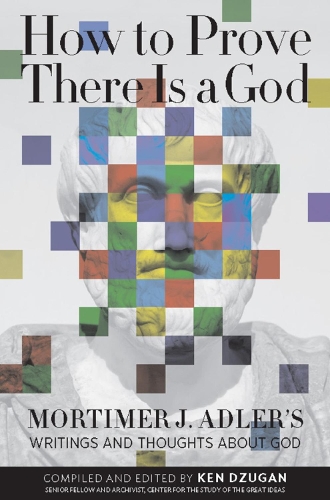
How to Prove There Is a God: Mortimer J. Adler's Writings and Thoughts About God
(Paperback)
Publishing Details
How to Prove There Is a God: Mortimer J. Adler's Writings and Thoughts About God
By (Author) Mortimer Adler
Edited by Ken Dzugan
Open Court Publishing Co ,U.S.
Open Court Publishing Co ,U.S.
13th February 2012
United States
Classifications
General
Non Fiction
Nature and existence of God and of the Divine
110
Physical Properties
Paperback
320
Width 152mm, Height 228mm
439g
Description
One of the great tasks of Mortimer Adlers illustrious life was his search for a watertight proof of the existence of God. Adler believed that his search had been successful.
Adler spent years studying the classic proofs of Gods existence, especially Aquinass Five Ways, and found shortcomings in all of them, as conventionally understood. But he thought that some of them contained ideas which, if properly developed, could be improved, and he continued to search for a satisfying and logically unassailable proof. Toward the end of the 1970s, he believed he had arrived at such a proof, which he presented in his historic work, How to Think about God (1980).
In the writings assembled in How to Prove There Is a God, Adler gives us his approach to the question of Gods existence in fresh and popular form. He defends his position against critics, both believers and skeptics.
The book includes a transcript of one of Adlers appearances on William Buckleys Firing Line, Adlers revealing interview with Edward Wakin, the exchange of views on natural theology between Adler and Owen Gingerich, and John Cramers eloquent argument that the trend of modern cosmology supports Adlers early struggles with the question of God's existence.
Reviews
"America's foremost philosopher." --TIME Magazine "Mortimer Adler's argument for the existence of God was a powerful reminder that the Aristotelian-Thomistic tradition was far from exhausted--now we can be grateful that Adler's work is receiving the serious attention it deserves." --DEAL W. HUDSON, author of Onward Christian Soldiers: The Growing Political Power of Catholics and Evangelicals in the United States (2008) "Why is there something rather than nothing This collection of essays, interviews, criticisms, and reflections gives us a Mortimer Adler as public learner, trying to find the right question to ask about the existence of God, wrestling with it over decades, addressing the arguments of great theologians, philosophers, and scientists, refining his own answer to the question, and responding to his critics--all with the clarity of thought and simplicity of expression that characterize his writing for the general public." --CHRISTOPHER NELSON, President, St. John's College Annapolis "How to Prove There Is a God is vintage Mortimer Adler. A job beautifully done." --JACQUES BARZUN, author of From Dawn to Decadence (2000) and Simple and Direct (1985)
Author Bio
MORTIMER J. ADLER, who died in 2001, left an indelible mark on American culture. Beginning in the 1930s, Adler was the major force in promoting the Great Books idea as an educational paradigm. He founded the Institute for Philosophical Research, launched the Paideia movement for educational reform, and revolutionized the Encyclopaedia Britannica. Dr. Adler edited hundreds of books and authored over sixty, ranging from original philosophical contributions to popular best-sellers like How to Read a Book. KEN DZUGAN, a graduate of MIT, had enjoyed a varied career in business, city planning, and real estate development, when in 1990 he read Mortimer Adler's How to Read a Book. "This experience transformed my life. It dramatically changed what I read, how I read, and why I read." In his role as Archivist at the Center for the Study of The Great Ideas, Dzugan is working his way through over 200,000 pages of Dr. Adler's papers, and has found over four hundred works never listed in any Adler bibliography, including one entire completed book.
